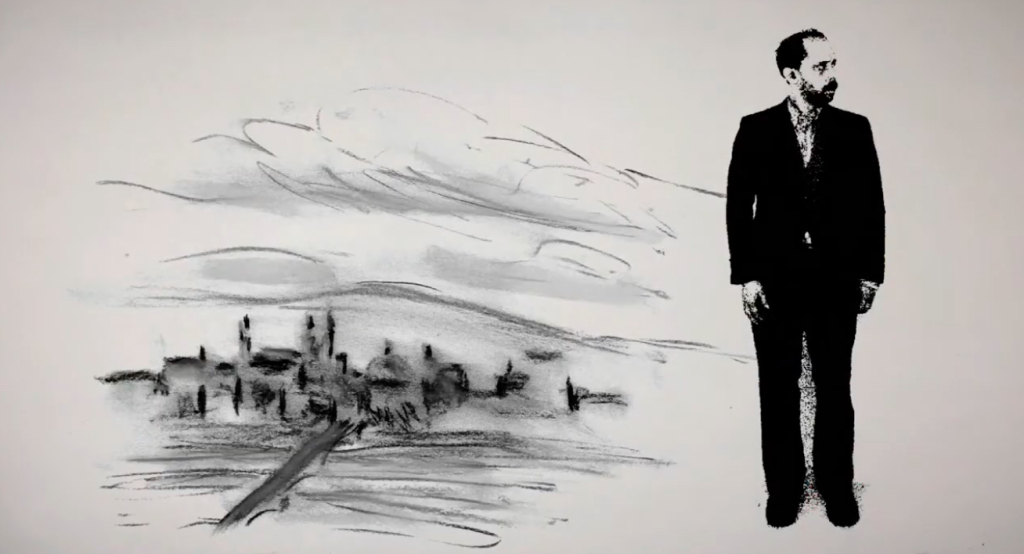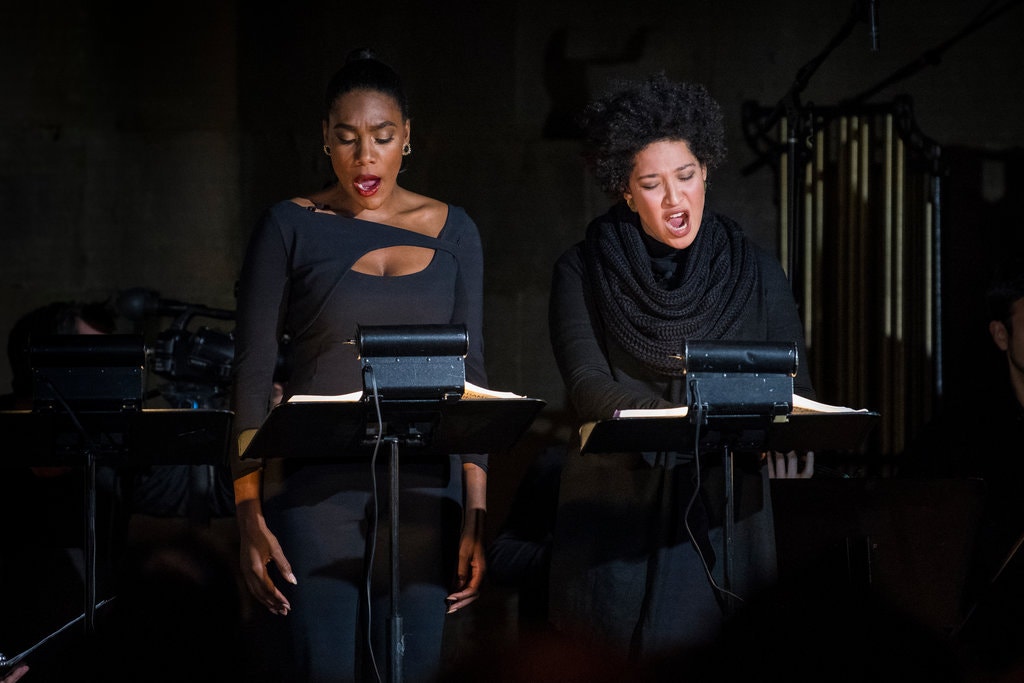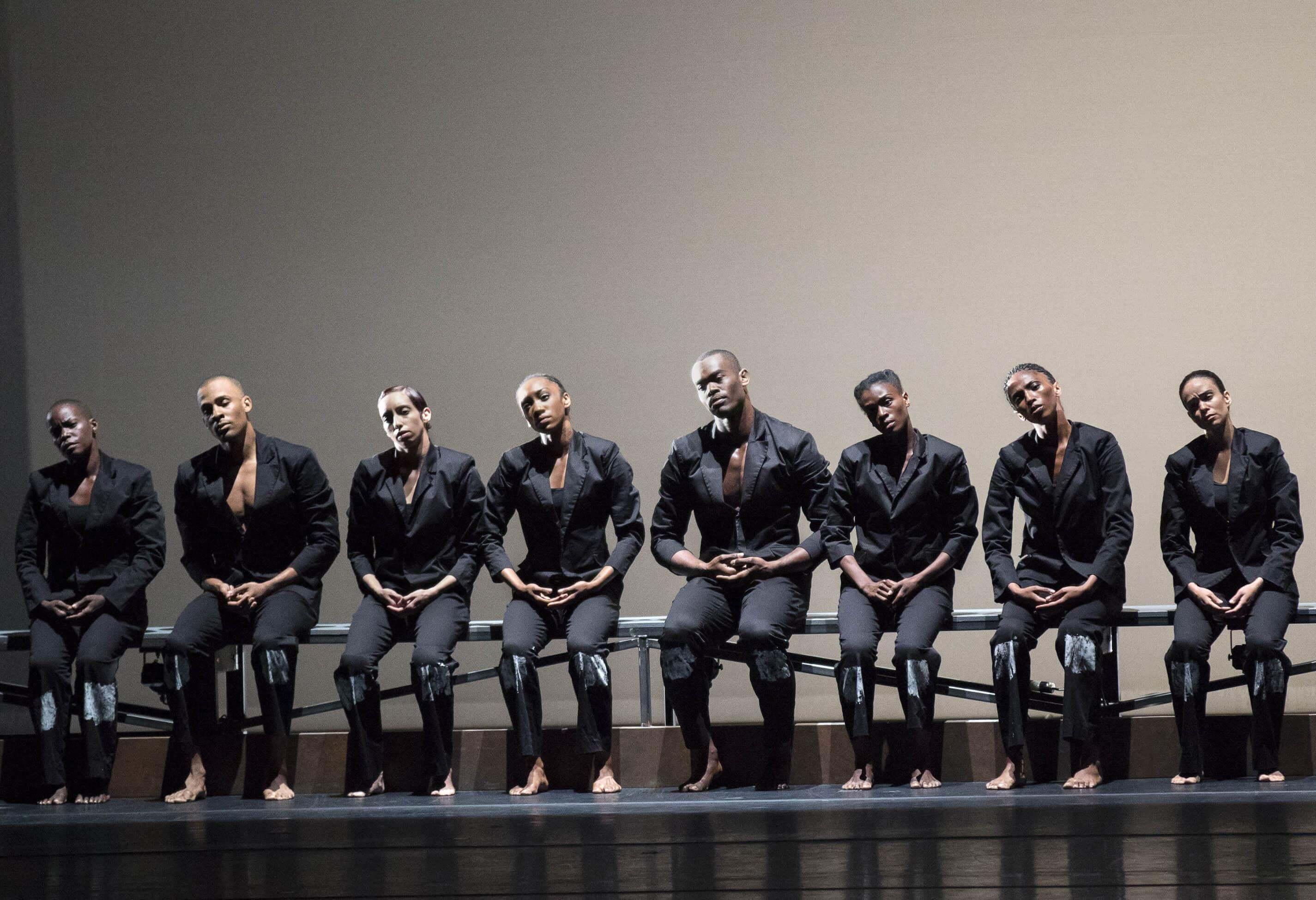VIEWPOINTS – Streaming Diary: Joshua William Gelb’s altogether astonishing FOOTNOTE, John Adams’ distilled but potent EL NIÑO, and Robert Battle’s thoughtfully-rendered NO LONGER SILENT
- By drediman
- August 30, 2020
- No Comments
This past week, I streamed three particularly fascinating works in the performing arts disciplines of theater, classical music, and dance. Each took artistic risks for which they were rewarded handsomely.

Joshua William Gelb in Theater in Quarantine’s “Footnote for the End of Time”.
FOOTNOTE FOR THE END OF TIME
Theater in Quarantine
Theater
In my opinion, one of the most important and visionary theater artists to emerge from the pandemic so far has been Joshua William Gelb. Via his Theater in Quarantine outfit, he’s been able to produce – literally from a closet in his East Village apartment – a book of work (produced on a weekly basis!) that not only defies obvious physical and technological limitations, but manages, astonishingly, to redefine and pioneer digital theater design in a serious manner. His latest fantastical rabbit hole, entitled Footnote for the End of Time (HIGHLY RECOMMENDED) (which you can view here), is based on Jorge Luis Borges’s short story The Secret Miracle, which tells the tale of a Jewish playwright who is sentenced to death during the Nazi’s occupation of Prague. Not very uplifting, you might be thinking? Leave it to Mr. Gelb’s 30-minute fever dream of a monologue, however, to inject restless energy and more than a touch of humor into this otherwise downbeat scenario. Indeed, vibrant life-force literally animates the playwright’s hallucinatory final hours. With the help of artist Jesse Gelaznik (who provides real-time hand-drawn illustrations) and composer Alex Weston, audiences are treated to a theatrical experience akin to the works of South African artist William Kentridge, notably in their coiled energy and handmade surreality. Although I had a blast viewing The 7th Voyage of Egon Tichy (see my thoughts on it here), Mr. Gelb’s sci-fi romp from a few weeks ago, he has outdone himself here, creating a work that entertains, as well as intellectually and emotionally provokes (once again, Mr. Gelb has collaborated with his 7th Voyage director Jonathan Levin). I can’t wait to see what he comes up with next.

J’nai Bridges and Julia Bullock in John Adams and Peter Sellars’ “El Niño” at the Met Cloisters.
EL NIÑO
American Modern Opera Company (AMOC) / MetLiveArts
Classical Music
I also recently took in a 2018 MetLiveArts performance of El Niño (HIGHLY RECOMMENDED) (which you can stream here), John Adams and Peter Sellars’ shimmering, large-scale 2000 oratorio which recounts the events of Christ’s Nativity, but through the lens of Latin American poetry. Although there are a number of subtle contemporary overtones in the retelling, the piece is still very recognizably the Christmastime story most of us are familiar with. One of the most enticing things about this particular performance was its setting – the Fuentidueña Chapel at the Met Cloisters, the Metropolitan Museum of Art’s immersive uptown location which specializes in medieval art. In many ways, it’s an inspired venue for the work, given Christianity’s prevalence during the Middle Ages. At the same time, the work, with its distinctly feminist point of view, is also consciously at odds with medieval history, which is primarily told from the male perspective. AMOC’s version, which has been judiciously reshaped by Julia Bullock (who also performed as a vocalist, splendidly), distills the piece in a number of ways, most notably its length, which has been reduced by from approximately two hours to less than an hour. Additionally, Ms. Bullock has excised the work’s children’s choir and downsized the original full orchestra, leaving behind four vocalists – which luxuriously included mezzo-soprano J’nai Bridges and countertenor Anthony Roth Costanzo, two stars of the Metropolitan Opera’s recent hit staging of Philip Glass’s Akhnaten – and twelve instrumentalists. Despite its truncation, this El Niño remains aurally ravishing, thanks in large part to Preben Antonsen’s expert and resourceful arrangements and Christian Reif’s taut conducting. Indeed, what the oratorio has lost in scale, it has gained in sacred atmosphere and intimacy. Stripped of its spectacle, what we’re left with is a deeply personal human story that potently speaks to our times.

The company of Alvin Ailey American Dance Theater in Robert Battle’s “No Longer Silent”.
NO LONGER SILENT
Alvin Ailey American Dance Theater
Dance
Lastly, I continued to explore Alvin Ailey’s repertoire, this week streaming artistic director Robert Battle’s 2007 ensemble piece No Longer Silent (RECOMMENDED). The thoughtfully-rendered work bears a lot of similarities to Mr. Battle’s earlier, smaller-scale Juba (you can read my thoughts on it here) in that both seem to have been inspired by Nijinsky’s seminal ballet The Rite of Spring, particularly in their ritualistic and tribal subtext and choreographic language. Even Erwin Schulhoff’s score (“Ogelala”) is immediately reminiscent of Stravinsky’s groundbreaking composition, with its (still) jarring, frenzied rhythms that tempt cacophony. Another ballet that I was reminded of was iconic Israeli choreographer Ohad Naharin’s crowd-pleasing Minus 16, which exuberantly displayed, side-by-side, the notions of the individual and the monolithic group. Similarly, Mr. Battle seems invested in exploring the dynamics of groups vis-à-vis the individual, furthermore suggesting the futility of choosing just one mode of existence over the other. There’s also a slight parodying air of socialist propaganda to it all, which calls to mind the often sardonic dances of Alexei Ratmansky. Despite these apparent and not-so-apparent influences, the 30-minute No Longer Silent nevertheless stands on its own, thanks to the unmistakable stylings of Alvin Ailey’s dancers, the ballet’s striking design work, and its somewhat menacing tone. Indeed, I got the sense that the dance is vaguely set in some sort of concentration camp (the composer himself died in one during the Holocaust). I look forward to the day I can see the work performed live.

 Copyright © 2025
Copyright © 2025
Leave a Reply